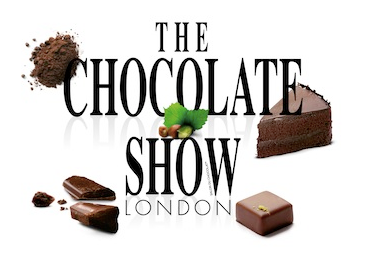It's currently National Chocolate Week in the UK. Of course, for some of us every week is a chocolate week, but this particular time of year is when British chocolate companies of all sizes come together to show their wares and promote the industry.

The week culminates with The Chocolate Show at Olympia (I'm doing a free chocolate tasting on Friday - come and say hello!), where chocolate lovers of all ages come today for three days of indulgent delights.
But over the last few years, the chocolate industry has changed hugely. We're much more fussy about where we buy our treats, with more of us looking for a Fairtrade, Rainforest Alliance or Organic logo before we'll even consider buying. But what do those labels actually mean?
The first thing to know about these certifications is that they all cost money. That's money that adds to the price of your chocolate bar or comes out of the money farmers are paid. So just because your chocolate bar doesn't have an array of feel-good stamps of approval on the wrapper doesn't necessarily mean it's bad. In fact, the majority of artisan, small batch chocolate makers go well beyond the standards required.
I want to take a brief look at just one of these certification schemes, Fairtrade.
Fairtrade is great, right? After all, the clue is in the name. It's trade that's fair. The Fairtrade Foundation guarantees that producers will receive a financial premium for their produce and we can all sleep better at night knowing we've done our bit.
For some products, Fairtrade works very well. Unfortunately, chocolate isn't one of those products.
While a small Fairtrade premium goes to the farmer, it's a premium that gets multiplied hugely by the time it reaches the consumer. In some cases, very little of that ends up with the actual farm labourers. There is a cost associated with carrying the Fairtrade logo, so for small cocoa farmers, it's often not financially viable. The premium they receive simply doesn't cover the cost of certification.
Fairtrade also uses a system called mass balance. That means that as long as a chocolate company buys enough cocoa beans to cover a Fairtrade labelled bar, that bar doesn't necessarily have to contain any Fairtrade beans. There is no requirement that your bar of Fairtrade Dairy Milk actually uses any Fairtrade cocoa.
Most people in the chocolate industry agree that the Fairtrade system is far from perfect, but that it's better than nothing. There are other schemes that work along similar lines to Fair Trade, but most of them share the same problems.
It turns out that there is a better solution. Direct Trade is a very simple concept. The chocolate maker buys cocoa directly from the cocoa farmer, cutting out all the middlemen.

Cocoa is generally sold as a commodity and ends up being very difficult to trace. Middlemen take their cut along the way and the beans gets piled up in huge warehouses. With Direct Trade, a lot of the costs associated with that disappear and the chocolate maker is able to pay more for a better quality, traceable product. The chocolate maker is also able to give feedback directly to the farmer, helping them improve their working practices and producing a better tasting chocolate.
But the nature of Direct Trade means that there is no central body co-ordinating it. Industry Organisations like Direct Cacao aim to promote the concept, but with a system that relies on independently arranged deals, there will never be a standard logo on every chocolate bar signifying that the cocoa has been directly traded. Such a scheme would cost money and would ultimately defeat the point of it.
So how do you know if the ingredients in your chocolate bar have been ethically sourced? The answer is simple: ask the chocolate maker.
If they can't or won't answer your question, consider buying your chocolate elsewhere. If they give a vague answer "We use West African beans", it's likely they don't have a direct relationship. But if the chocolate maker's response is to tell you stories of their rainforest adventures in search of cacao and the individual farmers they have met along the way, then that's probably a good sign.
We all need to be paying a little more attention to where our food comes from and events like The Chocolate Show are a great way to meet the producers and ask these kinds of questions. Chocolate should be fun of course, but it's a lot easier to enjoy when you know it's doing something positive as well.